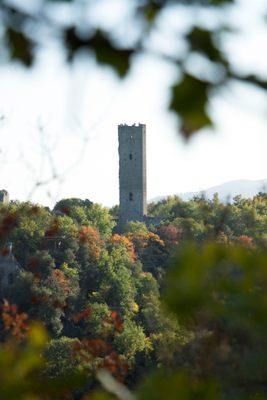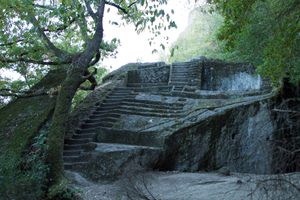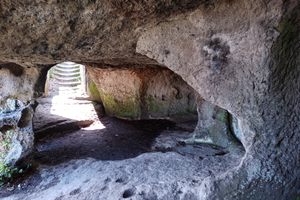About
The lonely silhouette of the Tower of Chia (Torre di Chia) rises above the scenic woods and waterfalls of Fosso Castello in the province of Viterbo, the land of the ancient Etruscans. It is here that the Italian director, poet, and writer Pier Paolo Pasolini spent the final years of his life, and filmed the key scenes of his most famous film, "The Gospel According to Matthew."
In the spring of 1964, Pasolini was scouting the region for locations for what would be considered his cinematic masterpiece, a retelling of the biblical story of Jesus. He discovered the tiny village of Chia and its melancholic tower near Fosso Castello and decided it was the ideal place to film the scenes of Jesus' baptism in the River Jordan. Pasolini fell in love with the area, writing that it was the most beautiful landscape in the world.
Several years later his dreams would come true: He purchased the tower, restored it, and built himself a small house at the foot of the structure. Chia became his retreat and source of inspiration, and his tower was a refuge where he worked on his final novel, Petrolio. Sadly, Pasolini would never complete the manuscript; he was found dead on the night between the 1st and 2nd of November, 1975, on a beach in Ostia.
The 13th-century tower was originally built as a lookout, part of a fortress situated on a high and inaccessible tuff spur, on top of ancient Etruscan structures. Before Pasolini's acquisition, it had been in the hands of several of the most powerful families in Viterbo and Rome, such as the Orsini, the Colonna, and the Lante della Rovere. Chia's old village is now mostly abandoned (and is worth exploring), although the area must have been densely inhabited and productive in earlier times. Below the tower, you can still stumble upon the ruins of old watermills and houses.
Related Tags
Know Before You Go
The tower can be reached on foot, just off the Ortana provincial road. The interior is seldom open, unless on special occasions. A trail leads around the site down to the waterfalls and old watermills of Fosso Castello and then on to the pyramid in Bomarzo.
Flavors of Italy: Roman Carbonara, Florentine Steak & Venetian Cocktails
Savor local cuisine across Rome, Florence & Venice.
Book NowCommunity Contributors
Added By
Published
November 6, 2018




























